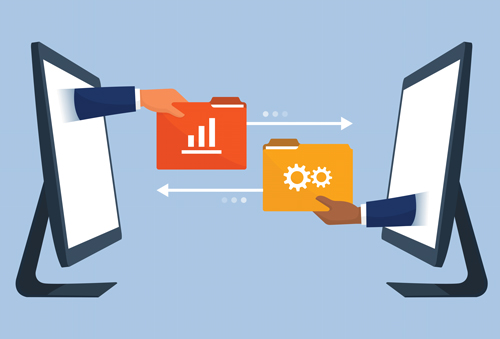Strengthening Cyber Defences: The Comprehensive Guide to Cyber Attack Simulation Services
Introduction

In today’s digital landscape, cyber-attacks are increasingly targted and sophisticated, posing significant risks to businesses. Cyber Attack Simulations provide a proactive approach to testing and strengthening an organization’s cybersecurity response plans and defences. By mimicking real-life attack scenarios, these simulations help identify response plan vulnerabilities, improve response skills, and ensure compliance with industry regulations. Additionally, these cyber security measures enhance organizational defences by continuously testing and validating security frameworks.
Beyond Technology’s tailored Cyber Attack Simulation service offers businesses the tools to enhance their preparedness, mitigate risks, and build a resilient cybersecurity posture, making it an essential component of any robust security strategy. This sets the foundation for understanding the importance of proactive cyber defence.
The Importance of Proactive Cyber Defence
Proactive cyber defence is crucial in today’s rapidly evolving threat landscape. Rather than waiting for an attack to occur, businesses must anticipate potential threats and prepare accordingly. A reactive approach often results in significant damage, financial loss, and reputational harm, as it typically involves addressing vulnerabilities after a breach has occurred.
In contrast, proactive defence strategies, such as Cyber Attack Simulations enable organizations to assess and validate the effectiveness of their security response measures against real-world attack scenarios. These simulations provide insights into weak points within an organization’s skills and processes, allowing for targeted improvements.
Additionally, they help in training staff and executives to recognise and respond to threats effectively, ensuring a unified and rapid response during an actual incident. By staying ahead of cyber criminals, businesses not only protect their assets but also maintain customer trust and comply with regulatory requirements, ultimately safeguarding their long-term success and resilience in an increasingly digital world.
Investing in response planning and simulations helps organizations make informed decisions about allocating resources to their security investments, leading to better protection against cyber threats.
Understanding the Cyber Threat Landscape
The cyber threat landscape is constantly evolving, with new and increasingly sophisticated threats emerging daily. Cyber criminals are employing advanced tactics, from ransomware and phishing to more complex attacks like advanced persistent threats (APTs) and zero-day exploits. These threats are designed to breach an organization’s defences, steal sensitive data, disrupt operations, and cause financial and reputational damage.
Understanding the nature of these threats is essential for businesses to develop effective defences. Assessing and validating security measures against potential threats is crucial to reducing overall cyber risk. Today’s cyber threats are not just limited to large corporations; small and medium-sized enterprises (SMEs) are also at significant risk due to perceived vulnerabilities and often limited cybersecurity resources. Moreover, as businesses increasingly adopt digital transformation strategies, the attack surface expands, giving cyber criminals more opportunities to exploit.
Identifying and mitigating security response gaps within an organization's defences is vital to enhancing their overall security posture against evolving cyber threats. By staying informed about the latest threats and trends in cybercrime, organizations can better anticipate potential attacks and implement measures to protect their assets, ensuring their operations remain secure in an increasingly hostile digital environment.
How a Cyber Attack Simulator Works
Cyber Attack Simulations are a methodical process designed to replicate real-world cyber threats within a controlled environment, allowing organizations to test their response plans and understand potential attack paths and vulnerabilities to improve their cybersecurity posture. The process typically involves four key phases:
- Phase 1 – Organisational, Technical and circumstance discovery: Beyond Technology will review available documentation and plans, along with undertaking interviews to consider likely attack vectors and defensive capabilities to determine the specifics of your organisation.
- Phase 2 – Design the simulations: Using the information captured in phase 1, Beyond Technology will design customised simulation scenarios for your organisation. The simulation will be designed to be realistic and relevant and may include realistic limitations on the timely availability of information, advice and key decision makers. Your specific operating environment and the participants roles and responsibilities will be taken into account to design the scenario, and scenario decision dependent branches to induce communication challenges and decision stress.
- Phase 3 – Conduct the Simulation: Conducted over 3 separate sessions (normally over a 2-3 day window) a facilitated, structured simulation will unfold. Participants will be engaged in discussions to confirm accountabilities, but where appropriate encouraged to collaborate on determining impacts, consequences and required decisions. With scenario decision branches determining the path through the simulation it not only seeks to confirm existing processes, but also to expose limitations or advantages of responsive decision making capabilities.
- Phase 4 – Evaluate the exercise and produce report: Beyond Technology will produce a Post Critical Incident Review report that includes feedback and observations captured during the simulation. This will seek to highlight areas that worked well, and reveal concerns and gaps in the response plans. We will provide our prioritised “Actionable Advice” that will provide recommendations for readiness improvement.
Overall, Cyber Attack Simulations provide a practical, hands-on approach to understanding and improving cybersecurity, ensuring organizations are better prepared for potential threats.
The Role of Executive Teams in Cyber Defence
Executive teams play a pivotal role in an organization’s cyber defence strategy. Cybersecurity is no longer just an IT issue; it’s a critical business risk that requires top-level attention and decision-making. Executives must be actively involved in understanding the potential threats their organization faces and the impact a cyber-attack could have on operations, finances, and reputation. Their involvement is crucial in allocating resources, setting the tone for a security-conscious culture, and ensuring that cybersecurity initiatives align with business goals.
During Cyber Attack Simulations, the participation of executives is vital as it helps them gain firsthand experience of how a cyber incident unfolds and the challenges involved in managing it. This experience enhances their awareness and readiness, enabling them to make informed decisions in real-time during an actual attack. Furthermore, executive involvement ensures that cybersecurity is prioritized across all levels of the organization, fostering a more resilient and prepared environment. These simulations are essential for assessing and understanding an organization's security posture, providing valuable insights into existing vulnerabilities and helping to proactively strengthen the overall security strategy.
IT teams also play a crucial role in conducting these simulations and evaluations of an organization's cybersecurity defences. They test various security controls, identify weaknesses, and enhance overall security effectiveness through rigorous planning and continuous validation processes.
Customization of Scenarios to Identify Security Gaps
Customization is a critical aspect of effective Cyber Attack Simulations. Each organization faces unique challenges, vulnerabilities, and threats based on its industry, size, and digital footprint. A one-size-fits-all approach to cybersecurity simply isn’t sufficient. That’s why Cyber Attack Simulations are tailored to the specific needs and context of the business.
During the scenario design phase, simulations are customized to reflect the most relevant and pressing threats an organization might face, including the protection of critical assets. This includes considering factors such as the organization’s technology stack, operational processes, and the type of data it handles. For example, a financial institution might focus on scenarios involving sophisticated phishing attacks or insider threats, while a healthcare provider might simulate attacks targeting patient data.
By creating tailored scenarios, organizations can more accurately assess their vulnerabilities and response capabilities, leading to targeted improvements that significantly enhance their overall cybersecurity posture. This approach ensures that the simulation is both relevant and effective, providing maximum value to the organization.
Benefits of Cyber Attack Simulations
Cyber Attack Simulations offer numerous benefits that can significantly enhance an organisation’s cybersecurity posture.
- Enhanced Preparedness: By simulating real-world cyber-attacks, organisations can test their existing response plans in a controlled environment. This hands-on experience allows them to identify vulnerabilities and gaps in their security measures, ensuring that they are better prepared to handle actual threats. Simulations also help in refining broader incident response protocols, ensuring that all stakeholders know their roles during a cyber incident.
Testing and improving network security controls through simulations is crucial for identifying gaps and enhancing security measures across various platforms and scenarios.
- Continuous Improvement: Cyber threats are constantly evolving, and so should an organization’s response plans. Regular Cyber Attack Simulations provide ongoing assessments of security measures, enabling continuous improvement. As new threats emerge, simulations can be updated to reflect these changes, keeping the organisation’s response plans up-to-date and effective.
- Increased Executive and Staff Awareness: Simulations involve not just the IT team but also executives and other key staff members. This involvement raises awareness at all levels of the organization, fostering a security-conscious culture. Employees become more vigilant, and executives gain a deeper understanding of the risks and the importance of cybersecurity response plans, processes and investments.
- Compliance with Industry Standards: Many industries have specific cybersecurity regulations that organizations must comply with. Cyber Attack Simulations help ensure that businesses meet these standards, reducing the risk of non-compliance penalties and enhancing overall trust with customers and partners.
Compliance and Regulatory Requirements
In today’s regulatory environment, compliance with cybersecurity standards is not optional; it’s a necessity for organizations across various industries. Cyber Attack Simulations play a crucial role in helping businesses meet these regulatory requirements. Many regulations, such as GDPR, HIPAA, and Australia’s Notifiable Data Breaches (NDB) scheme, mandate that organizations take proactive steps to protect sensitive data and ensure the integrity of their systems. Cyber Attack Simulations allow organizations to demonstrate their commitment to these standards by providing tangible evidence of their security measures and preparedness.
By regularly conducting simulations, businesses can identify potential compliance gaps before they lead to violations and costly penalties. Additionally, these simulations often include documentation and reporting that can be used to satisfy audit requirements. This proactive approach not only helps in avoiding legal repercussions but also builds trust with customers, partners, and regulators, ensuring that the organization’s reputation remains intact in the face of evolving regulatory landscapes.
Cost Efficiency in Cybersecurity
Cyber Attack Simulations are not just a means of improving security; they also offer significant cost-saving benefits by optimizing the performance of security processes and other cybersecurity capabilities. Investing in simulations can be more cost-effective than dealing with the fallout of a real cyber-attack, which can include financial losses, regulatory fines, and damage to reputation. By identifying process vulnerabilities before they are exploited, organizations can avoid the steep costs associated with data breaches, system downtime, and legal liabilities.
Moreover, improved preparedness reduces the likelihood of severe breaches, which can save organizations from the exorbitant costs of emergency response measures and recovery efforts. In the long run, regular Cyber Attack Simulations can lead to a more efficient and cost-effective cybersecurity strategy, protecting both financial resources and business continuity.
Building Organizational Resilience
Cyber Attack Simulations are essential for building organizational resilience, ensuring that businesses can quickly recover from cyber incidents. These simulations test the readiness of staff and response processes. By identifying weaknesses in incident response plans, organizations can refine strategies and ensure that employees are prepared for crises.
Simulations help establish effective backup plans, data recovery strategies, and communication protocols, minimizing operational downtime. Ultimately, a resilient organization can adapt, recover, and maintain continuity despite cyber threats, securing long-term success and stability in an unpredictable digital landscape.
Beyond Technology’s Expertise
Beyond Technology stands out in the field of cybersecurity response planning with its extensive experience and specialized expertise in conducting Cyber Attack Simulations. Their team is composed of seasoned professionals who possess deep knowledge of the latest cyber threats. This expertise allows them to design highly effective and realistic simulations tailored to each client’s specific needs. Beyond Technology’s approach is rooted in a thorough understanding of industry-specific challenges, whether it’s finance, healthcare, or other sectors, ensuring that simulations are relevant and impactful.
Beyond Technology emphasizes a collaborative process, working closely with organizations to integrate the simulation outcomes into their broader cybersecurity strategies. Their commitment to continuous learning and adaptation means that they stay ahead of emerging threats, providing clients with the most up-to-date defence strategies. This combination of expertise, customization, and ongoing advice positions Beyond Technology as a trusted partner in enhancing organizational cybersecurity response planning and resilience against cyber-attacks.
Common Misconceptions About Cyber Attack Simulations
Despite their effectiveness, there are several misconceptions about Cyber Attack Simulations. One common myth is that these simulations are only necessary for large enterprises, but in reality, businesses of all sizes can benefit from testing their defences.
Another misconception is that simulations are too costly or time-consuming; however, the potential savings from preventing a breach far outweigh the costs. Some also believe that simulations are purely technical exercises, but they are more crucial for improving organizational awareness and response across all departments and leaders.
Addressing these misconceptions helps organizations fully understand the value of Cyber Attack Simulations in strengthening their cybersecurity posture.
Future of Cyber Attack Simulations
The future of Cyber Attack Simulations will evolve with advancements in cyber threats and technology. As cyber criminals adopt more sophisticated tactics, simulations will increasingly incorporate artificial intelligence (AI) and machine learning (ML) to create dynamic, unpredictable scenarios. These technologies will enhance realism and adaptability, allowing simulations to better mimic real-world threats.
The scope of simulations will broaden to include emerging technologies like AI computing, IoT, and Zero Trust networks, addressing their unique vulnerabilities. Real-time data analytics will further refine defence strategies, ensuring organizations remain resilient against evolving cyber threats.
Conclusion: Strengthen Your Cybersecurity Today
In an era of increasing cyber threats, taking proactive measures is essential for safeguarding your business. Cyber Attack Simulations offer a powerful tool to test your response plans, improve response strategies, and ensure compliance with industry regulations. By regularly conducting these simulations, you can build resilience, protect your assets, and maintain customer trust.
Don’t wait for a breach to happen—take action now to secure your organization’s future. Contact Beyond Technology today to learn how their tailored Cyber Attack Simulation services can help fortify your defences and keep your business safe.
FAQ: Top 5 Google Questions Answered
1. Why is a cyber-attack simulation important?
Cyber-attack simulations are vital because they allow organizations to test their response plans against real-world threats in a controlled environment. This proactive approach helps identify vulnerabilities, improve response strategies, and enhance overall cybersecurity preparedness.
2. What is included in a cyber-attack simulation?
A cyber-attack simulation typically includes phases such as discovery, scenario design, execution, and evaluation. Each phase is tailored to mimic potential threats and test the organization's ability to respond effectively.
3. How often should cyber-attack simulations be conducted?
Simulations should be conducted regularly, at least annually, or more frequently if there are significant changes in the organization’s infrastructure or threat landscape.
4. What are the benefits of cyber-attack simulations?
The benefits include improved security posture, enhanced incident response, compliance with regulations, and cost savings by preventing breaches.
5. Who should be involved in a cyber-attack simulation?
Boards, Executives, IT staff, and key personnel across departments should be involved to ensure comprehensive preparedness and effective response.



